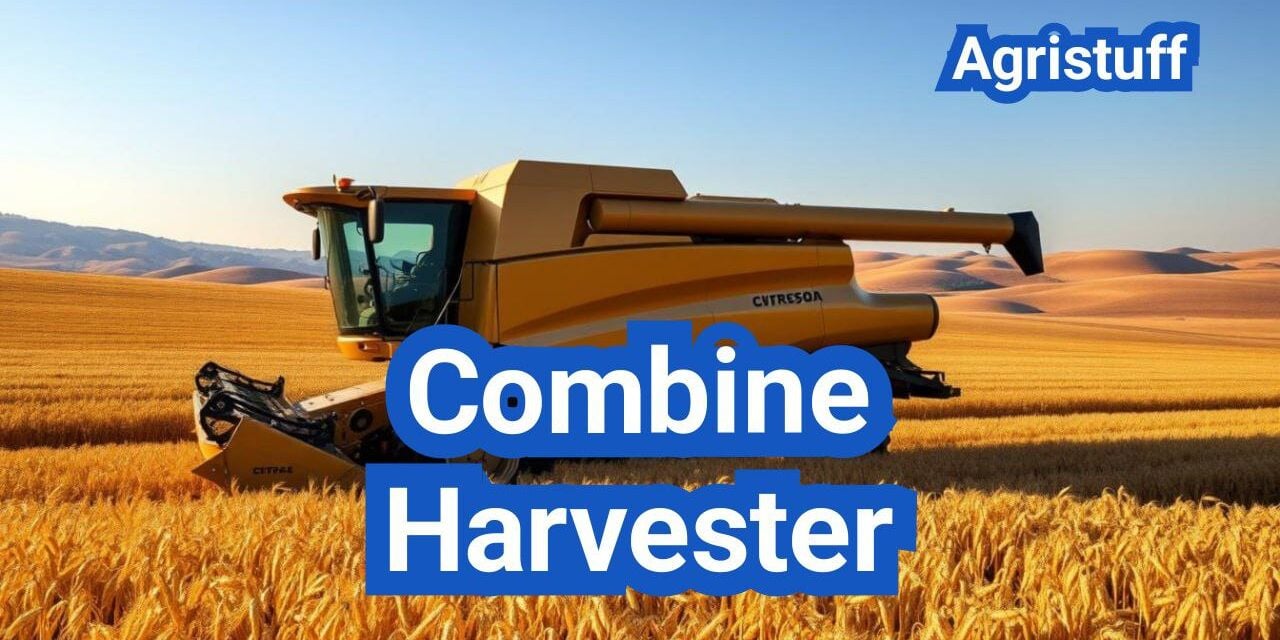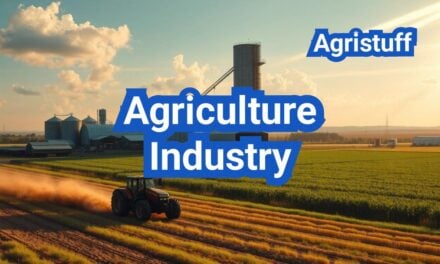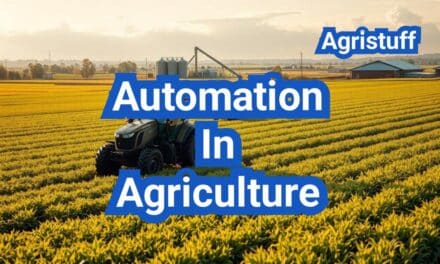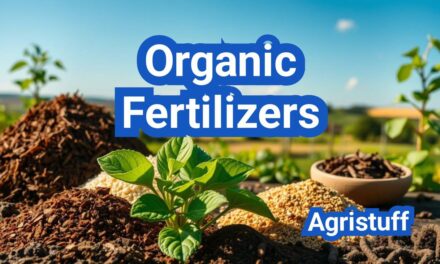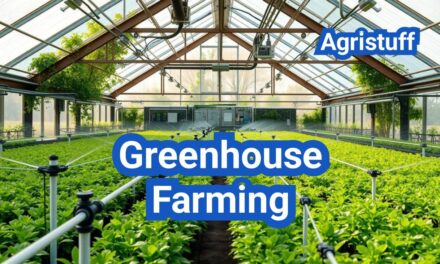Efficient harvesting is crucial for farmers, and a well-maintained combine harvester machine is essential for maximizing yields. These complex agricultural machinery gather, thresh, and clean grain, making them a vital part of modern farming.
Proper adjustments and regular maintenance are key to ensuring the optimal performance of a combine harvester. This comprehensive guide covers the essential settings, loss checks, and maintenance checklist to help farmers and operators get the most out of their farming equipment.
Key Takeaways
- Understand the essential components of a combine harvester machine
- Learn how to optimize settings for efficient harvesting
- Discover the importance of regular loss checks
- Follow a comprehensive maintenance checklist to minimize downtime
- Maximize yields and productivity with a well-maintained combine harvester
Understanding Combine Harvester Machines in American Agriculture
The agricultural combine harvester has played a crucial role in modernizing farming practices across the U.S. These machines have become indispensable in American agriculture, significantly enhancing productivity and efficiency.
Definition and Basic Functions
A combine harvester, also known as a combine, is a complex machine designed to efficiently harvest a variety of crops. It combines several processes, including reaping, threshing, and winnowing, into a single operation. The basic functions of a combine harvester include cutting the crop, separating the grain from the chaff and straw, and collecting the grain.
The versatility of combine harvesters allows farmers to harvest different types of crops, such as corn, soybeans, wheat, and barley, using the same machine with appropriate adjustments and attachments.
Historical Development in the United States
The history of combine harvesters in the United States dates back to the late 19th century. The first combines were large, steam-powered machines that were not widely adopted due to their size and cost. However, with the introduction of smaller, more affordable, and more efficient gasoline-powered combines in the early 20th century, their popularity grew.
Over the years, combine harvesters have evolved significantly, incorporating advanced technologies such as GPS guidance, yield monitoring, and automated controls. Manufacturers like John Deere have played a pivotal role in this evolution, offering a range of models that cater to different farm sizes and crop types.
Economic Impact on Modern Farming
The economic impact of combine harvesters on modern farming has been profound. By increasing harvesting efficiency and reducing labor costs, these machines have contributed to the consolidation of farms and the shift towards larger-scale agricultural operations.
The use of combine harvesters has also enabled farmers to manage larger areas, improve crop quality, and reduce losses during harvesting. This has led to increased productivity and profitability for farmers, making the agricultural sector more competitive in the global market.
In conclusion, combine harvester machines have revolutionized American agriculture by enhancing efficiency, reducing labor costs, and improving crop quality. Their continued evolution and adoption of new technologies will be crucial in meeting the future demands of the agricultural sector.
Types of Combine Harvester Machines and Their Applications

American farmers have access to a wide array of combine harvester machines, from conventional to rotary models, each with unique features and applications. The choice of combine harvester depends on several factors, including the type of crop, farm size, and regional conditions.
Conventional vs. Rotary Combines
Combine harvesters are broadly classified into two main types: conventional and rotary combines. Conventional combines use a cylinder and concave to thresh the grain, while rotary combines utilize a rotor to separate the grain from the straw and chaff.
Conventional combines are suitable for crops like wheat, oats, and barley, whereas rotary combines are often preferred for crops like corn and soybeans due to their higher capacity and efficiency.
“The rotary combine has revolutionized the harvesting process, offering higher productivity and reduced grain loss.” –
John Deere spokesperson
Class Sizes and Capacity Ratings
Combine harvesters are also categorized based on their size and capacity. The most common classifications are:
- Small-capacity combines (less than 200 horsepower)
- Medium-capacity combines (200-350 horsepower)
- Large-capacity combines (more than 350 horsepower)
The capacity rating is crucial in determining the suitability of a combine harvester for a particular farm size and crop type.
| Combine Type | Power Range (HP) | Crop Suitability |
|---|---|---|
| Small-Capacity | Less than 200 | Wheat, Oats, Barley |
| Medium-Capacity | 200-350 | Corn, Soybeans, Wheat |
| Large-Capacity | More than 350 | Corn, Soybeans, Large-scale operations |
Specialized Crop-Specific Harvesters
Some combine harvesters are designed for specific crops, such as corn or soybeans. These specialized harvesters are equipped with features like row crop headers and specialized threshing systems to optimize performance for the target crop.
For instance, John Deere and Case IH offer a range of crop-specific combines that cater to the diverse needs of farmers across different regions.
Major Manufacturers in the U.S. Market
The U.S. combine harvester market is dominated by a few major manufacturers, including:
- John Deere
- Case IH
- New Holland
- AGCO
These manufacturers offer a range of models with varying features and capacities, providing farmers with a wide range of choices to suit their specific needs.
Essential Components and Operation of Combine Harvester Machines
The operation of a combine harvester involves multiple critical systems working in harmony to maximize yield and minimize loss. These complex machines are designed to efficiently gather, thresh, separate, and clean grains, making them indispensable in modern agriculture.
Header and Cutting Platform
The header and cutting platform are the initial points of contact between the combine harvester and the crop. The header is responsible for gathering the crop, while the cutting platform cuts the crop at the base. Proper adjustment of the header height and cutting platform is crucial for minimizing losses and ensuring efficient crop gathering.
The design of the header and cutting platform can vary depending on the type of crop being harvested. For instance, corn headers are equipped with snapping rolls to gather corn stalks, while grain headers use a cutting sickle to cut small grains.
Threshing and Separation Systems
The threshing and separation systems are vital for extracting grains from the harvested crop. The threshing drum, also known as the rotor, is responsible for threshing the crop, separating the grains from the chaff and straw. Concave clearance is a critical parameter that needs to be adjusted based on crop type and moisture content to optimize threshing performance.
The separation system, which includes components like the straw walkers or rotary separators, further separates the remaining grains from the straw and chaff. Proper adjustment of these components is essential for minimizing grain loss.
Cleaning and Grain Handling Systems
After threshing and separation, the cleaning system further purifies the grain by removing any remaining chaff and debris. This is typically achieved through a combination of sieves and fans. Efficient cleaning is crucial for delivering high-quality grain.
The grain handling system, including the grain tank and unloading auger, is responsible for storing and transferring the cleaned grain. Modern combines often feature advanced grain handling systems that enable rapid unloading and minimize grain damage.
Control Systems and Technology Integration
Modern combine harvesters are equipped with sophisticated control systems and technology integration, including GPS guidance, yield monitoring, and automated settings adjustment. These technologies enable precision agriculture practices that optimize harvesting performance and reduce operator fatigue.
Control systems allow operators to monitor and adjust various parameters in real-time, ensuring that the combine operates within optimal settings for the given crop conditions.
Pre-Harvest Combine Preparation and Calibration

Before the harvest season begins, it’s vital to conduct thorough preparations and calibrations on your combine harvester to optimize its performance. Proper preparation ensures that your machine is in top working condition, ready to handle the demands of harvest season efficiently.
Comprehensive Inspection Checklist
A comprehensive inspection is the foundation of pre-harvest preparation. This involves checking critical components such as the engine, hydraulics, electrical systems, and cutting mechanisms. Regular maintenance checks can prevent unexpected breakdowns during the harvest.
- Engine oil and filter condition
- Hydraulic fluid levels and leaks
- Battery and electrical system functionality
- Condition of cutting bars and headers
Yield Monitor Calibration Procedures
Yield monitor calibration is crucial for accurate yield measurement. Calibration involves adjusting the yield monitor to match the actual grain flow, ensuring that the data collected is reliable. This process typically includes setting the grain moisture baseline and adjusting the sensor sensitivity.
“Accurate yield monitoring is key to understanding your crop’s performance and making informed decisions for future harvests.”
Header Attachment and Initial Adjustments
The header is a critical component of the combine harvester, and its proper attachment and adjustment are vital for efficient harvesting. Initial adjustments include setting the header height, configuring the reel speed, and ensuring proper alignment.
Technology Systems Setup
Modern combine harvesters are equipped with advanced technology systems, including GPS guidance and automated control systems. Setting up these systems correctly is essential for maximizing efficiency and reducing operator fatigue.
- GPS signal reception and accuracy
- Automated header height control calibration
- Configuration of yield monitoring and other precision agriculture tools
By following these pre-harvest preparation and calibration steps, farmers can ensure their combine harvesters are operating at peak performance, leading to more efficient and productive harvests.
Optimizing Header Settings for Different Crops
To maximize yield and reduce waste, farmers must optimize header settings for their specific crops. The header is a critical component of a combine harvester, responsible for cutting and gathering crops. Proper adjustments can significantly impact harvesting efficiency and crop loss.
Soybean Header Adjustments
When harvesting soybeans, it’s essential to adjust the header to minimize loss and maximize efficiency. Key adjustments include setting the correct reel speed, adjusting the header height, and ensuring proper draper tension.
- Reel speed should be slightly faster than the combine’s forward speed.
- Header height should be set to cut the crop just above the ground.
- Draper tension should be adjusted to prevent crop slippage.
Corn Head Deck Plates Configuration
Corn head deck plates play a crucial role in gathering corn efficiently. Proper configuration involves adjusting the deck plates to match the crop conditions and row spacing.
- For dry corn, deck plates can be set closer together.
- In moist conditions, a slightly wider setting may be necessary to prevent ear loss.
- Row spacing should be considered when configuring deck plates.
Small Grain Platform Settings
For small grains like wheat and barley, the platform settings are critical for efficient harvesting. Adjustments include setting the reel speed and adjusting the cutterbar.
- Reel speed should be synchronized with the combine’s forward speed.
- The cutterbar should be adjusted to cut the crop as close to the ground as possible.
Specialty Crop Header Optimization
Specialty crops, such as sunflowers and canola, require specific header adjustments. Understanding the unique characteristics of these crops is key to optimizing header settings.
For example, sunflowers may require a specialized header with features like flexible cutting elements to accommodate the crop’s height and stem thickness.
Threshing System Settings and Adjustments

The threshing system is a critical component of combine harvesters, requiring precise adjustments to ensure optimal performance. It is responsible for separating grains from chaff and straw, and its efficiency directly impacts the overall yield and quality of the harvested crop.
Concave Clearance Optimization
Concave clearance is a crucial setting in the threshing system, as it determines the distance between the threshing cylinder or rotor and the concave. Optimizing this clearance is essential for effective threshing without causing excessive damage to the grain.
Table: Recommended Concave Clearance Settings by Crop Type
| Crop Type | Recommended Concave Clearance (mm) |
|---|---|
| Wheat | 10-15 |
| Corn | 15-20 |
| Soybeans | 8-12 |
Rotor Speed Selection by Crop Type
Rotor speed is another critical factor in the threshing process. Different crops require different rotor speeds to optimize threshing efficiency. For instance, crops like wheat and soybeans typically require lower rotor speeds compared to corn.
“The rotor speed should be adjusted according to the crop type and moisture content to minimize grain damage and maximize threshing efficiency.” – John Deere Operator’s Manual
Cylinder/Rotor Settings for Various Conditions
The cylinder or rotor settings need to be adjusted based on various conditions such as crop type, moisture content, and field conditions. For example, in wet conditions, the threshing system may need to be adjusted to handle higher moisture levels without compromising grain quality.
Impact of Crop Moisture on Threshing Performance
Crop moisture significantly impacts threshing performance. High moisture levels can lead to increased grain damage and reduced threshing efficiency. It is essential to monitor crop moisture levels and adjust the threshing system accordingly.
Table: Impact of Crop Moisture on Threshing Performance
| Crop Moisture (%) | Threshing Performance |
|---|---|
| 10-15 | Optimal |
| 15-20 | Good |
| 20-25 | Fair |
| >25 | Poor |
Cleaning System Optimization for Maximum Grain Quality
To maximize grain quality, it’s essential to optimize the cleaning system of your combine harvester. The cleaning system is a critical component that separates grain from chaff and other debris, directly impacting the quality of the harvested grain.
Chaffer and Sieve Settings
Proper chaffer and sieve settings are crucial for effective grain separation. The chaffer and sieves work together to separate grain from chaff and other materials. Adjusting these settings correctly ensures that grain is not lost and that the final product is clean.
To optimize chaffer and sieve settings, start by consulting your combine harvester’s manual for recommended settings based on the type of crop being harvested. Generally, you’ll need to adjust the opening size of the chaffer and sieves to match the crop conditions.
Fan Speed Calibration Techniques
Fan speed calibration is another critical aspect of cleaning system optimization. The fan speed affects how efficiently chaff and debris are removed from the grain. If the fan speed is too low, chaff may not be adequately removed, while too high a speed can result in grain loss.
To calibrate the fan speed, begin by setting it according to the manufacturer’s recommendations. Then, make adjustments based on the specific crop conditions and the amount of material being processed. Monitoring the grain quality and loss during operation will help you fine-tune the fan speed.
Tailings Return System Adjustments
The tailings return system plays a vital role in re-processing material that has not been fully separated. Adjusting this system correctly ensures that unthreshed material is returned to the threshing area without overloading the system.
Check the tailings return system regularly to ensure it’s functioning correctly. Adjust the settings as needed to balance the return flow with the threshing capacity.
Clean Grain Sample Assessment
Regularly assessing the clean grain sample is essential for determining the effectiveness of your cleaning system settings. By examining the grain sample, you can identify any issues with grain cleanliness or loss.
To assess the grain sample, collect samples from the grain tank or tank auger regularly. Examine the samples for signs of excessive chaff, broken grain, or other contaminants. Use this information to make further adjustments to the chaffer, sieves, and fan speed as needed.
Grain Loss Measurement and Reduction Strategies
Accurate grain loss measurement is the foundation of effective harvest optimization strategies. Regular loss checks are vital for identifying areas of improvement in combine harvester performance. By understanding where and how grain loss occurs, farmers can make informed adjustments to minimize waste and maximize yield.
Drop Pan Loss Check Procedure
The drop pan loss check is a straightforward method for measuring grain loss during harvesting. To perform this check, a drop pan is placed under the combine harvester to collect grain that is being lost. The procedure involves:
- Positioning the drop pan in the path of the combine harvester.
- Operating the combine for a short distance with the pan in place.
- Collecting and weighing the grain that falls into the pan.
- Calculating the grain loss per acre based on the weight collected and the area covered.
Interpreting Loss Patterns and Sources
Once grain loss is measured, the next step is to interpret the loss patterns and identify the sources. Common sources of grain loss include:
- Header Loss: Grain lost due to improper header settings or damage.
- Threshing Loss: Grain not separated from the chaff and straw due to inadequate threshing.
- Separating Loss: Grain lost because it was not properly separated from straw and chaff.
- Cleaning Loss: Grain lost over the sieves or chaffer.
Calculating Actual Loss Percentages
To understand the extent of grain loss, it’s essential to calculate the actual loss percentages. This involves comparing the amount of grain lost to the total grain harvested. The formula for calculating grain loss percentage is:
Grain Loss Percentage = (Grain Lost / Total Grain Harvested) * 100
Making Adjustments Based on Loss Findings
After identifying and quantifying grain loss, adjustments can be made to the combine harvester to reduce loss. These adjustments may include:
- Optimizing header settings to reduce header loss.
- Adjusting threshing and separating components to improve grain separation.
- Fine-tuning cleaning system settings to minimize grain loss over the sieves.
By implementing these strategies, farmers can significantly reduce grain loss, thereby increasing overall harvest efficiency and profitability.
Harvest Moisture Management and Targets

The importance of harvest moisture management cannot be overstated, as it directly impacts grain quality, machine performance, and overall farm productivity. Managing moisture levels during harvest is a delicate balance that farmers must achieve to ensure the quality of their crops and the efficiency of their harvesting operations.
Determining Optimal Harvest Moisture
Determining the optimal harvest moisture is critical and varies significantly depending on the type of crop being harvested. For instance, corn is typically harvested at a moisture content between 15% and 25%, while soybeans are usually harvested at a lower moisture content, around 13%. The optimal moisture level is influenced by factors such as the crop variety, weather conditions, and the intended use of the harvested grain.
Crop-Specific Moisture Targets
Different crops have specific moisture targets that farmers aim to achieve during harvest. For example, wheat is often harvested at a moisture content of around 12% to 14%, while barley is typically harvested at a slightly higher moisture level. Understanding these crop-specific targets is essential for adjusting harvesting equipment and strategies to minimize losses and maximize grain quality.
Impact of Moisture on Machine Settings
Moisture levels significantly impact the settings and performance of harvesting machinery. Higher moisture content can lead to increased grain damage and higher losses during threshing and separation. Conversely, very dry conditions can result in increased brittleness of grains, leading to breakage. Adjusting machine settings, such as the concave clearance and rotor speed, based on the moisture content of the crop is crucial for optimizing performance and minimizing losses.
Moisture Testing Equipment and Procedures
Accurate moisture testing is vital for determining the optimal harvest time and ensuring that the grain is dried to the appropriate level for storage. Various moisture testing equipment and procedures are available, ranging from handheld moisture meters to more sophisticated grain analyzers. Regular moisture testing helps farmers make informed decisions about harvesting and drying, ultimately affecting the quality and market value of their grain.
Daily Maintenance During Harvest Season

To ensure efficiency and prevent breakdowns, daily maintenance tasks are essential for combine harvesters. Regular maintenance not only prolongs the lifespan of the machine but also ensures it operates at optimal levels throughout the harvest season.
Morning Inspection Routine
Starting the day with a thorough inspection is crucial. Check the machine’s critical systems, including the engine, hydraulics, and threshing mechanism, for any signs of wear or damage. Ensure all safety features are functioning correctly and that there are no leaks or blockages.
- Check engine oil and coolant levels.
- Inspect tire pressure and condition.
- Verify that all lights and safety features are operational.
Mid-Day Check Points
During the day, perform quick checks to ensure the combine is running smoothly. Monitor grain quality and loss, and make adjustments as necessary to maintain optimal performance.
- Check grain loss monitors and adjust settings if needed.
- Inspect the header and cutting platform for damage or misalignment.
- Ensure the cleaning system is functioning properly.
End-of-Day Cleaning Procedures
Cleaning the combine at the end of each day is vital to prevent grain and debris buildup, which can lead to fires or mechanical issues. Use compressed air or water to clean out grain residues from the machine, paying particular attention to the threshing and cleaning areas.
- Remove all grain and debris from the combine.
- Clean the grain tank and auger.
- Inspect and clean the threshing and separation areas.
Lubrication and Fluid Level Checks
Regular lubrication and fluid checks are critical to the longevity and performance of the combine harvester. Ensure all moving parts are well-lubricated, and check engine oil, hydraulic fluid, and coolant levels daily.
- Lubricate all grease fittings.
- Check and top off engine oil and coolant.
- Inspect hydraulic fluid levels and condition.
By following these daily maintenance tasks, farmers can significantly reduce the risk of breakdowns and ensure their combine harvester operates efficiently throughout the harvest season.
Comprehensive Combine Maintenance Checklist
To ensure optimal performance, a comprehensive maintenance checklist is essential for combine harvesters. Regular maintenance is key to extending the lifespan of the machine and preventing costly repairs during critical harvest periods.
Engine and Drivetrain Service Requirements
The engine and drivetrain are critical components of a combine harvester. Regular service is necessary to maintain their performance and longevity.
- Check engine oil levels and top off as necessary
- Change engine oil and filter according to the manufacturer’s schedule
- Inspect and replace air filters to ensure proper airflow
- Lubricate drivetrain components as recommended
Engine Maintenance Schedule:
| Service Interval | Task |
|---|---|
| Daily | Check engine oil level |
| 50 hours | Change engine oil and filter |
| 100 hours | Inspect and clean air filters |
Hydraulic System Maintenance
The hydraulic system is vital for the operation of a combine harvester. Proper maintenance is crucial to prevent failures and ensure smooth operation.
- Check hydraulic fluid levels regularly
- Inspect hydraulic hoses and fittings for signs of wear or damage
- Change hydraulic filters according to the manufacturer’s recommendations
Electrical System Checks and Diagnostics
The electrical system plays a critical role in modern combine harvesters. Regular checks and diagnostics are necessary to identify and address potential issues.
- Inspect electrical connections for signs of corrosion or wear
- Check battery condition and charge level
- Use diagnostic tools to identify any electrical system faults
Wear Parts Inspection and Replacement Schedule
Wear parts are components that degrade over time due to use. Regular inspection and replacement are essential to maintain the combine harvester’s performance.
- Inspect cutting blades, threshing components, and other wear parts regularly
- Replace wear parts according to the manufacturer’s schedule or when showing signs of significant wear
By following this comprehensive maintenance checklist, farmers can ensure their combine harvesters operate efficiently and effectively throughout the harvest season.
Combine Fire Prevention and Safety Protocols
As harvesting season progresses, the danger of combine fires escalates, requiring proactive safety measures. Combine harvester fires can result in significant losses, both in terms of equipment and potential crop yield. Understanding and implementing effective fire prevention and safety protocols is crucial for farmers and operators.
Common Fire Hazards in Harvesting Operations
Several factors contribute to the risk of fires during harvesting operations. These include debris accumulation, electrical issues, and mechanical failures. Dry crop material and dust can easily ignite when exposed to sparks or excessive heat.
- Debris accumulation around the engine and exhaust system
- Faulty electrical wiring or malfunctioning electrical components
- Overheated bearings or other mechanical parts
- Static electricity generated during operation
Preventative Cleaning and Maintenance
Regular cleaning and maintenance are critical in preventing combine fires. This includes removing debris, checking for worn or damaged parts, and ensuring proper lubrication of moving components.
Daily Maintenance Checklist:
| Task | Frequency |
|---|---|
| Clean engine and exhaust area | Daily |
| Inspect electrical systems | Daily |
| Lubricate moving parts | Daily/Weekly |
Fire Suppression Equipment Requirements
Having appropriate fire suppression equipment on hand is essential. This may include fire extinguishers rated for Class B and Class C fires, which involve flammable liquids and electrical equipment, respectively.
It’s crucial to ensure that all operators are trained in the use of this equipment.
Emergency Response Procedures | Combine Harvester Machine
In the event of a combine fire, having a well-rehearsed emergency response plan is vital. This includes knowing how to use fire suppression equipment, evacuating the area, and contacting emergency services.
By understanding common fire hazards, maintaining equipment properly, having the right fire suppression equipment, and knowing how to respond in an emergency, farmers can significantly reduce the risk of combine fires during harvesting operations.
Lockout/Tagout and Farm Safety Practices
The importance of lockout/tagout procedures cannot be overstated in agricultural settings. Ensuring that equipment is properly shut off during maintenance is crucial for preventing accidents and saving lives.
OSHA Requirements for Agricultural Equipment
The Occupational Safety and Health Administration (OSHA) sets forth specific guidelines for lockout/tagout procedures in agricultural settings. These regulations are designed to protect workers from the dangers of unexpected equipment startup.
- Employers must develop and implement a comprehensive energy control program.
- Employees must be trained on lockout/tagout procedures and the hazards associated with agricultural equipment.
- Regular inspections must be conducted to ensure compliance with OSHA standards.
Proper Lockout/Tagout Procedures | Combine Harvester Machine
Implementing lockout/tagout procedures involves several key steps to ensure equipment is safely de-energized. This includes:
- Identifying all energy sources that could potentially power the equipment.
- Shutting off the equipment and verifying that it is completely stopped.
- Applying lockout/tagout devices to prevent accidental startup.
- Releasing any stored energy and verifying that the equipment is safe to work on.
Safe Maintenance Practices | Combine Harvester Machine
Safe maintenance practices go hand-in-hand with lockout/tagout procedures. This includes:
- Regularly inspecting equipment for wear and tear.
- Using personal protective equipment (PPE) as required.
- Following manufacturer guidelines for maintenance and repair.
Training Requirements for Operators
Proper training is essential for ensuring that operators understand and can implement lockout/tagout procedures and other safety practices. Training programs should cover:
- The hazards associated with agricultural equipment.
- The proper use of lockout/tagout devices.
- Emergency procedures in case of an accident.
By emphasizing lockout/tagout and farm safety practices, agricultural operations can significantly reduce the risk of accidents and create a safer working environment for all employees.
Troubleshooting Common Combine Harvester Problems
Effective troubleshooting of combine harvesters is essential for maintaining productivity and grain quality. Combine harvesters are complex machines with multiple systems that can be prone to various issues during operation.
Grain Loss and Quality Issues | Combine Harvester Machine
Grain loss is a significant concern for farmers as it directly impacts their yield and profitability. Common causes of grain loss include improper header settings, threshing system malfunctions, and cleaning system inefficiencies.
- Check header attachments for damage or misalignment
- Adjust reel speed and position according to crop conditions
- Monitor threshing system for proper concave clearance and rotor speed
To address grain quality issues, operators should:
- Inspect the cleaning system for clogging or worn-out parts
- Adjust chaffer and sieve settings for optimal grain separation
- Calibrate fan speed to minimize grain loss while maintaining cleanliness
Mechanical Malfunctions and Solutions | Combine Harvester Machine
Mechanical failures can cause significant downtime and repair costs. Common mechanical issues include:
- Clogged or damaged cutting platforms
- Worn-out threshing components
- Hydraulic system leaks or failures
To address these issues, operators should:
- Regularly inspect and maintain cutting platforms
- Replace worn-out threshing components promptly
- Check hydraulic fluid levels and inspect for leaks
Electronic System Errors and Diagnostics | Combine Harvester Machine
Modern combine harvesters rely heavily on electronic systems for monitoring and control. Common electronic issues include:
- Faulty sensors or wiring
- Software glitches or outdated firmware
- Display or interface malfunctions
To troubleshoot electronic system errors, operators should:
- Check sensor calibration and wiring integrity
- Update software and firmware as recommended by the manufacturer
- Restart systems or perform a hard reset if necessary
When to Call for Professional Service | Combine Harvester Machine
While many issues can be resolved by operators, some problems require professional assistance. Operators should call for professional service when:
- Complex mechanical failures occur, such as gearbox or engine problems
- Electronic system issues persist after basic troubleshooting
- Unusual noises or vibrations are detected
By following these troubleshooting guidelines, operators can minimize downtime, maintain grain quality, and ensure the longevity of their combine harvester machines.
Combine Harvester Machine Investment Considerations
Investing in a combine harvester is a significant decision for farmers, requiring careful consideration of various factors. This investment can significantly impact the efficiency and profitability of farming operations.
New vs. Used Purchase Factors | Combine Harvester Machine
When deciding between new and used combine harvesters, farmers must consider their budget, the age and condition of the equipment, and the potential for technological advancements in newer models. As John Deere, a leading manufacturer, notes, “New combines offer the latest technology and efficiency improvements, but used models can provide significant cost savings.”
Price Ranges for Different Classes and Brands
The cost of combine harvesters varies widely based on factors such as size, brand, and features. For instance, smaller combines can start around $200,000, while larger, high-capacity models can exceed $500,000. Understanding these price ranges is crucial for making an informed investment decision.
Financing and Leasing Options | Combine Harvester Machine
Farmers have various financing and leasing options available when purchasing a combine harvester. Each option has its advantages and disadvantages, which must be carefully evaluated. For example, leasing can provide flexibility and reduce upfront costs, as highlighted in a
“leasing allows farmers to upgrade their equipment more frequently, keeping them at the forefront of technology.”
Return on Investment Calculations | Combine Harvester Machine
Calculating the return on investment (ROI) for a combine harvester involves considering factors such as increased efficiency, reduced labor costs, and potential improvements in crop quality. A thorough ROI analysis helps farmers determine whether their investment will yield positive financial returns over time.
By carefully considering these factors, farmers can make an informed decision when investing in a combine harvester, ensuring that their investment supports the long-term success of their farming operation.
Maximizing Your Combine’s Performance and Longevity
Maximizing combine harvester performance and longevity requires a multifaceted approach that encompasses proper maintenance, adjustments, and operation. By following the guidelines outlined in this article, farmers and agricultural professionals can optimize their harvesting processes, leading to increased efficiency and productivity.
Efficient harvesting is crucial for agricultural productivity, and combine harvesters play a vital role in this process. Regular maintenance, including daily checks and comprehensive maintenance schedules, is essential for preventing mechanical failures and ensuring optimal performance.
Proper adjustments, such as optimizing header settings, threshing system configurations, and cleaning system calibrations, are also critical for maximizing grain quality and minimizing losses. By understanding the intricacies of combine harvester operation and implementing best practices, farmers can significantly enhance their harvesting outcomes.
By prioritizing combine longevity through regular maintenance and proper operation, farmers can protect their investment and ensure continued productivity over the long term. This, in turn, contributes to the overall efficiency of agricultural operations, supporting the goal of maximizing agricultural productivity.
FAQ
What are the main components of a combine harvester machine?
The main components of a combine harvester machine include the header and cutting platform, threshing and separation systems, cleaning and grain handling systems, and control systems.
How do I optimize header settings for different crops?
Optimizing header settings involves adjusting the height, angle, and reel speed according to the crop type. For example, soybean headers require adjustments to the reel speed and height to minimize damage, while corn head deck plates need to be configured to match the corn row spacing.
What is the importance of concave clearance optimization in threshing system settings?
Concave clearance optimization is crucial in threshing system settings as it directly affects the separation of grain from straw and chaff. Proper clearance ensures efficient threshing and reduces grain loss.
How can I measure and reduce grain loss during harvesting?
Grain loss can be measured using the drop pan loss check procedure. To reduce grain loss, adjustments can be made to the combine harvester settings, such as concave clearance, rotor speed, and chaffer and sieve settings.
What are the recommended daily maintenance tasks during harvest season?
Daily maintenance tasks during harvest season include morning inspection routines, mid-day check points, end-of-day cleaning procedures, and lubrication and fluid level checks.
How often should I perform comprehensive maintenance on my combine harvester?
Comprehensive maintenance should be performed according to the manufacturer’s schedule, typically at the end of the harvest season or after a certain number of hours of operation. This includes engine and drivetrain service, hydraulic system maintenance, electrical system checks, and wear parts inspection.
What are the common fire hazards in harvesting operations, and how can I prevent them?
Common fire hazards in harvesting operations include dry crop residues, electrical malfunctions, and hot engine components. To prevent fires, regular cleaning and maintenance are essential, along with the installation of fire suppression equipment.
What are the OSHA requirements for lockout/tagout procedures on agricultural equipment?
OSHA requires that agricultural equipment be properly locked out or tagged out during maintenance to prevent accidental startup. This involves following specific procedures to ensure the equipment is safely de-energized.
When should I call for professional service for my combine harvester?
You should call for professional service if you encounter complex mechanical malfunctions, electronic system errors, or if you’re unsure about troubleshooting procedures. Professional technicians can diagnose and repair issues efficiently.
What factors should I consider when investing in a combine harvester machine?
When investing in a combine harvester machine, consider factors such as new vs. used purchase, price ranges for different classes and brands, financing and leasing options, and return on investment calculations to ensure the best decision for your operation.
Conclusion of: Combine Harvester
Why the combine harvester machine settings, loss checks, and maintenance matter
A well-tuned combine harvester machine adds bushels to the bin, cuts fuel use, and protects grain quality. This guide gives you practical setup steps, quick field tests to quantify losses, and a straightforward maintenance checklist you can follow during the rush. Always begin with the operator’s manual for your model, then fine-tune to crop and conditions. Operator’s manuals & training (John Deere)
Know the five systems of a combine harvester machine
To dial in any combine harvester machine, think in five systems: header (cut & feed), feeder house (move crop in), threshing (rotor/cylinder + concave), separation (rotor/beaters/grates), and cleaning (fan + chaffer/sieve). Setup is a chain—if feeding is poor, everything downstream struggles—so adjust in order and change one variable at a time before re-checking loss. System-by-system combine settings (Iowa State R2R)
Start settings for your combine harvester machine the right way
Set the combine harvester machine to factory recommendations for the crop, then fine-tune slowly. In the cleaning shoe, start near higher fan speed to lift chaff; reduce only if you see whole grain blowing out. Use sieve openings that match kernel size. Adjust one control, test, and repeat. Combine adjustment for fall harvest (Iowa State)
Header setup for soybeans on a combine harvester machine
For soybeans, the combine harvester machine header should cut cleanly and feed steadily. Keep the reel axle 6–12 in ahead of the cutterbar, tips ~0.6 in above guards/floor, and run the reel ~10–25% faster than ground speed (faster if lodged). Sharp knives, correct hold-downs, and draper speed that clears the cutterbar prevent shatter and slugs. Reducing soybean harvest losses (MSU PDF)
Corn head deck plates on a combine harvester machine
On corn, set the combine harvester machine deck plates as wide as possible without dropping ears or shelling kernels, and keep gaps uniform across rows. Tighter plates reduce butt shelling; wider plates reduce trash intake—aim for the sweet spot that minimizes both. Re-check as stalk diameter changes through the field. Reduce corn yield loss by adjusting settings (K-State)
Threshing (rotor/cylinder and concave) on a combine harvester machine
The threshing section of the combine harvester machine separates grain from plant. Too fast/too tight breaks grain; too slow/too open leaves unthreshed material. In wheat and other small grains, start conservative, then nudge rotor/cylinder speed and concave clearance to balance clean threshing with minimal cracks or splits. Harvesting wheat (K-State MF2026)
Cleaning shoe (fan, chaffer, sieve) on a combine harvester machine
Clean grain comes from proper fan and sieve interaction in your combine harvester machine. Start near high fan to float chaff and open the sieve to pass whole kernels—then adjust until you remove trash without blowing grain. Watch grain sample, tailings, and walker/rotor losses to keep the shoe balanced. Fan & sieve guidance (Iowa State)
Match ground speed to throughput in a combine harvester machine
A steadily loaded threshing/cleaning system in the combine harvester machine reduces damage and improves separation. Speed up in lighter spots and slow down in heavy areas to maintain even flow. Verify your changes with stop-and-check routines, not just display numbers. Verifying combine adjustments (Iowa State)
Moisture targets that protect profit for a combine harvester machine
Harvest soybeans with the combine harvester machine around 13% moisture to reduce splits and shrink; watch day-to-day (and hour-to-hour) swings and adjust settings accordingly. Tough stems or green patches require slower ground speed and tweaks to threshing and cleaning. Soybean moisture ~13% (UNL CropWatch)
How to measure header vs. separator losses on a combine harvester machine
Stop, back up 15–30 ft, and sample both behind the header and behind the combine harvester machine to separate gathering from separator/cleaning losses. Use a drop pan or 1–10 ft² frames to count kernels, then convert to bu/ac. Repeat after each adjustment; let data—not guesswork—guide your changes. Estimate harvest losses (UNL CropWatch)
Quick field math for a combine harvester machine loss check
Rules of thumb speed decisions. For soybeans, about four seeds per square foot ≈ one bushel per acre of loss (medium seed). Count, calculate, and decide whether to slow down, tighten concave, or increase fan on your combine harvester machine. Grain loss field math (Channel/Bayer)
Small-grain specifics for a combine harvester machine
In wheat and other cereals, the combine harvester machine often needs slightly higher air and careful sieve settings to clean out light awns and chaff. Make small single-step changes, then re-sample to see the real effect on loss. Minimizing wheat harvest losses (SDSU PDF)
Soybean header loss is most of the problem—aim your combine harvester machine there first
Most soybean loss happens at the header, not out the back of the combine harvester machine. Prioritize cutterbar sharpness, reel position/speed, and feeding uniformity before chasing rotor or shoe settings. Identify soybean losses & adjustments (MSU)
Yield monitor calibration on the combine harvester machine
Data-driven harvest decisions depend on a properly calibrated yield monitor. Calibrate per crop and as conditions change so your combine harvester machine data truly reflects the field. Calibrate yield monitors (SDSU)
Daily maintenance that prevents downtime on a combine harvester machine
Every morning, walk the combine harvester machine: check fluid levels; tension on belts/chains; clean radiator and air screens; verify lights/alarms; inspect knife sections and guards; hit lube points; check tires/tracks. Document the inspection—this habit pays back in uptime. Pre-operation safety & maintenance checklist (John Deere PDF)
Clean-out between crops and fields on a combine harvester machine
Short, consistent clean-outs reduce carryover, foreign material, and fire risk in a combine harvester machine. Run the unload auger empty, clear the rock trap, blow off hotspots, and empty returns/tailings when switching crops or fields. Quick combine clean-out (Iowa State PDF)
Fire prevention for your combine harvester machine
Dry chaff on hot surfaces is a common ignition source. Keep the combine harvester machine clean, repair fuel and hydraulic leaks immediately, carry extinguishers, and avoid parking on dry residue at shutdown. NDSU Extension—farm safety resources
Lockout/Tagout (LOTO) before working on a combine harvester machine
Before you clear a plug or service belts, shut down the combine harvester machine, remove the key, lock the battery/power, drop cylinder stops, and secure the head. Group LOTO keeps everyone protected during team work. OSHA eTool: Lockout/Tagout
When to tweak rotor vs. shoe on a combine harvester machine
Unthreshed heads/cobs in the tank or behind the combine harvester machine signal threshing issues—tighten the concave slightly or increase rotor speed in small steps. Free, unbroken kernels on the ground point to shoe loss—open the sieve a touch or increase fan speed. If tailings are high in whole grain, you’re re-threshing good grain. Diagnose by symptom (Iowa State)
Small daily checklist for a combine harvester machine (print this)
Use this quick loop on your combine harvester machine each day: (1) Grease critical points; (2) Clean radiator/air screens more than once on dusty days; (3) Inspect knives/guards, deck plates, chains, belts; (4) Empty rock trap; (5) Check fire extinguishers; (6) Review in-cab losses and recalibrate if conditions change. Daily maintenance hub (John Deere)
Off-season care for your combine harvester machine
After harvest, deep-clean the combine harvester machine, change fluids/filters as specified, fix noted issues, and prep for storage under cover. A methodical post-season reduces surprise repairs next year. Off-season combine TLC (Case IH)
Troubleshooting cheat-sheet for a combine harvester machine
If rotor loss rises on the combine harvester machine: tighten concave slightly, then bump rotor speed. If shoe loss rises: open sieve a notch or increase fan. If header loss rises in soybeans: sharpen sections, lower reel slightly, increase reel 10–25% over ground speed, and slow travel in short or tough areas. Soybean harvest loss guide (MSU)
Recordkeeping that improves your combine harvester machine
Keep a simple log of changes and results for the combine harvester machine: date/time, crop moisture, rotor & concave, fan/sieves, deck plates, ground speed, and measured loss. These notes accelerate your learning curve each season and help crews replicate best settings. Adjust, verify, document (Iowa State)
Final thought
Small, measured changes—verified by quick loss checks—turn a good combine harvester machine into a great one. Start from the book settings, prioritize header performance, quantify losses with a frame or drop pan, and stick to daily maintenance and safety habits. Those disciplined steps protect grain quality, reduce losses, and keep you rolling when harvest windows are tight. Digital Ag Harvest Hub (Iowa State)
Sources & References
- John Deere: Manuals & Training
- Iowa State Extension: Combine Adjustment for Fall Harvest
- Iowa State R2R: Combine Settings by System
- Michigan State University: Reducing Soybean Harvest Losses (PDF)
- K-State: Harvesting Wheat (MF2026)
- UNL CropWatch: Soybean Moisture ~13% for Profit
- UNL CropWatch: Estimate Harvest Losses in Soybeans & Corn
- Channel/Bayer: Grain Loss From Behind the Combine
- SDSU Extension: Calibrate Your Combine Yield Monitors
- John Deere: Pre-Operation Safety & Maintenance Checklist (PDF)
- Iowa State: Between-Field Combine Clean-Out (PDF)
- NDSU Extension: Farm Safety Resources
- OSHA eTool: Group Lockout/Tagout Procedures
- Case IH: Off-Season Combine TLC
- Iowa State Digital Ag: Harvest Hub

